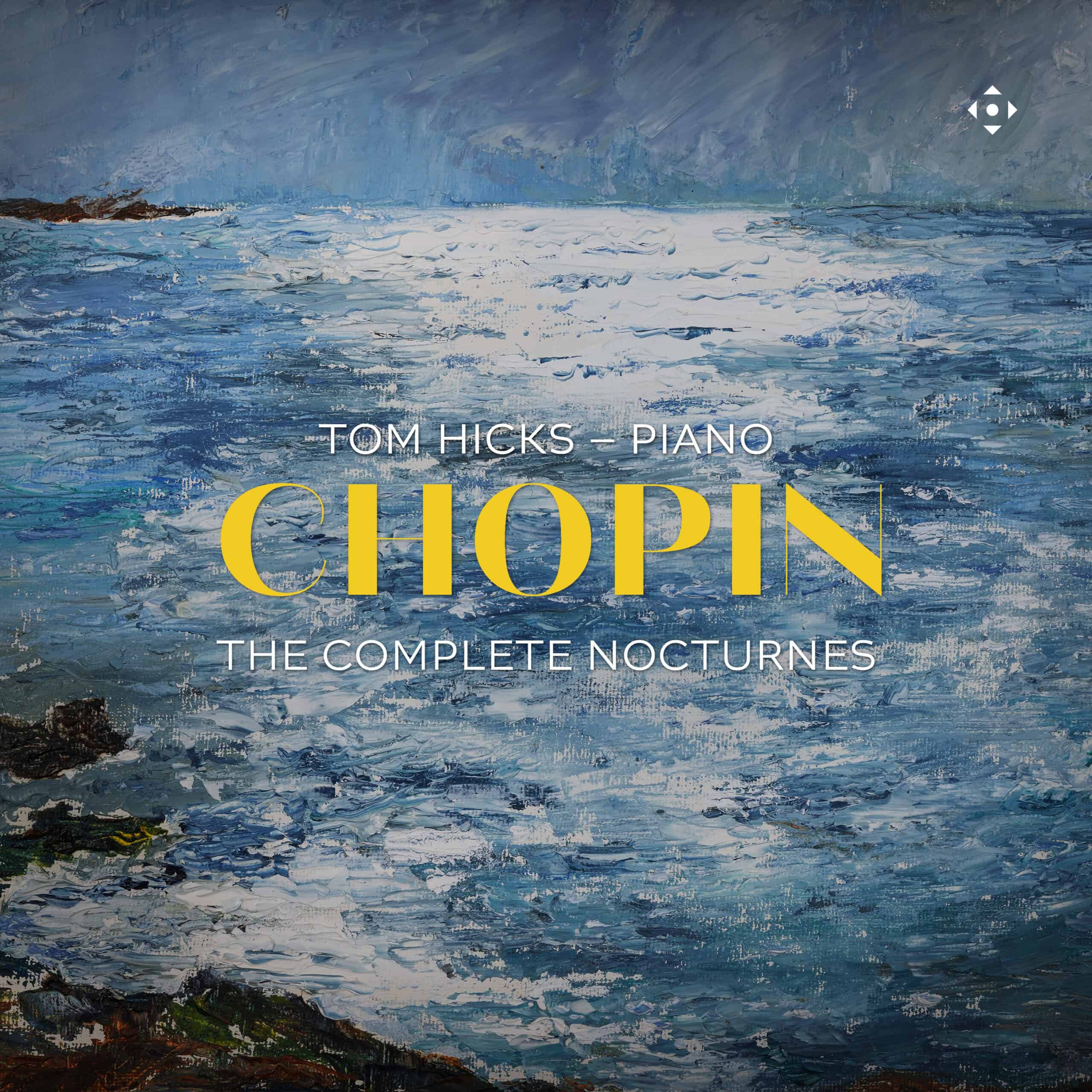InfoDad
As renowned as they are, Chopin’s Nocturnes are fraught with complexities for performers – not just technically and expressively, but in terms of figuring out just which notes to play in the first place. There are well-known disparities among the 21 works, caused by multiple equally valid editions and Chopin’s own tendency to revise works even after publication, and to improvise upon and within them in his own performances. Thus, there is no such thing as a definitive set of these Nocturnes. Each recording is by its very nature a pianist’s expression of opinion on what music each short work ought to contain – and how each should fit into the group (which is not a true cycle but simply a collection). None of the textual and textural questions interferes with listeners’ enjoyment of the music, however, and Tom Hicks’ fascinating decision-making underlying his two-disc recording of the complete Nocturnes on the Divine Art label shows just how expressive the pieces can be, individually and collectively, whether or not the audience notes (so to speak) the intriguing, mostly subtle choices that Hicks made that are out of the ordinary. Most of those decisions really are minor within the sweep of individual works and the totality of the group. What matters here, and what comes through with exceptional clarity, is how thoroughly engaged with the music Hicks is – whether through careful study to evaluate variants or through emotional connection is almost beside the point. Again and again, Hicks impresses with his attention to the pieces’ free-flowing rhythms, their bel canto thematic sound, their elements of drama contrasted with those of emotion that ventures well beyond the salon. What Hicks does particularly well is to communicate the songfulness of the music, his unerring attentiveness to the right-hand melodies making a designation such as “songs without words” almost as apt for these works as is the word “nocturnes.” Hicks’ pedal use is also worth noting: Chopin used the sustaining pedal liberally, creating a kind of musical climate or sonic background against which the “foreground” melodic material shines through with greater clarity. But overuse of the pedal does the music no favors, tending to muddy the sound and enlarge the overall audio impression of the Nocturnes in a way that undermines their effectiveness. There is no gigantism here. Hicks thoroughly understands this, using the pedal effectively and in true partnership with the left and right hands, almost as an organist uses pedal material in a third contrapuntal line. The comparison with the organ is overstated, true, but the notion of counterpoint is not: Chopin’s Nocturnes employ the technique to a considerable extent, using it to add to the pieces’ dramatic qualities while giving them the feeling of works hovering between the Classical and Romantic era (although their sheer expressiveness puts them firmly in the latter time period). Hicks is, from a strictly technical standpoint, a very fine pianist, one not afraid to step back from a focus on his own performance and let the music flow through his fingers (and pedals) so that what listeners hear is not all about the player but all about the composer – even though, in this case, exactly what the composer intended from each of the Nocturnes is unknowable, and perhaps was less than clear even to Chopin himself. Because the Nocturnes were not created as a cycle, it is just as valid and just as engaging to listen to Hicks’ recording in small bits, the way the pieces were originally published (in sets of two or three), or as a totality lasting close to two hours and immersing a listener into an auditory environment that becomes deeper and more welcoming every time it is experienced.
@divineartrecordingsgroup
A First Inversion Company
Registered Office:
176-178 Pontefract Road, Cudworth, Barnsley S72 8BE
+44 1226 596703
Fort Worth, TX 76110
+1.682.233.4978






![Listen to the full suite of Marcel Dupré’s Variations Sur un Noël, Op. 20 from Alexander Ffinch’s #Expectations release today! listn.fm/expectations [in bio]](https://scontent-dfw5-1.cdninstagram.com/v/t51.71878-15/588904367_2327488161082898_8709236950834211856_n.jpg?stp=dst-jpg_e35_tt6&_nc_cat=105&ccb=7-5&_nc_sid=18de74&efg=eyJlZmdfdGFnIjoiQ0xJUFMuYmVzdF9pbWFnZV91cmxnZW4uQzIifQ%3D%3D&_nc_ohc=v_eEWMfBei4Q7kNvwEq2jZA&_nc_oc=Admdf08yJ2ayVZ2SYDHO_MZdVGiNL5kSB7cLzoXL4wov0J4uCk-vce1LX5Q3VT46MDr5_PZU5knaMaDevBwhZTpc&_nc_zt=23&_nc_ht=scontent-dfw5-1.cdninstagram.com&edm=ANo9K5cEAAAA&_nc_gid=2DHuEHsYcA8QL5Aprm590Q&oh=00_Afk4k_xice4fxMlrxyl5UbgXxhgWZx7ynOBxjcC3JZxlEw&oe=6948E2EA)

![“the ‘Manteca’ Paraphrase – a rare foray into the two-piano medium but here played double-tracked – exudes a panache of which Dizzy Gillespie would surely have approved.… [a] recital well worth investigating.” —Gramophone Magazine with high praise for Ophelia Gordon's debut release, Kapustin: Between the Lines!](https://scontent-dfw5-3.cdninstagram.com/v/t51.82787-15/598796470_18303255136283342_540941604740887837_n.jpg?stp=dst-jpg_e35_tt6&_nc_cat=108&ccb=7-5&_nc_sid=18de74&efg=eyJlZmdfdGFnIjoiRkVFRC5iZXN0X2ltYWdlX3VybGdlbi5DMiJ9&_nc_ohc=sFsWUr2jc5wQ7kNvwEMM-ng&_nc_oc=AdlBBdQ-w0k9N_LidlVzzP0HEQKXhoySQHmgoh0pmkItkndYUDwNehFKAdBYnqow7uJpiTvghERieY_KYWIMx48M&_nc_zt=23&_nc_ht=scontent-dfw5-3.cdninstagram.com&edm=ANo9K5cEAAAA&_nc_gid=2DHuEHsYcA8QL5Aprm590Q&oh=00_AfnwKFp_DgJXWSRYvyZZAfX08RjnfIzQZjX9vmNnPRqBXQ&oe=6948F584)



